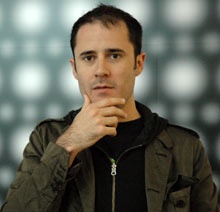It's no secret that hiring an amazing product designer is a big problem for everyone right now. Numerous articles have highlighted this issue over the last year, Garry Tan of YCombinator gave an interview on Mashable recently about his experience finding great designers, Jay Holtz wrote a great op-ed on NYTimes about his hardships finding a designer. We've seen first hand how hard it is to find great designers, this is what prompted us to create our own job board. So the question becomes: Why is it so tough to hire a designer?
The answer to the question isn't simple. The problem of finding a designer roots from a number of smaller issues: the fact that companies are not sure what skills they are looking for; there is a lack of trained product designers (who don't simply push pixels around) out there; and, of course, it's very tough to figure out how a designer fits in an organization.
We decided to ask some of our friends who had to deal with this very issue for their opinion. Here's what they had to say:

Designers are, in my experience, long on demand and short on supply for a few reasons:—Rand Fishkin, CEO and Founder of SEOmoz
Being a great designer requires a combination of raw talent, vision and structured practice that traditional schooling (K-12) doesn't typically teach or encourage. The personalities of artistically capable individuals often conflicts with a "hired designer" role, which requires finding an individual who can be flexible, accommodating and make intelligent compromises to get projects done. These traits are entirely at odds with fulfilling an artistic vision to perfection, yet many of the best designers are, indeed, artists.
Far too many managers and project leaders feel they've earned a right to influence, critique and judge a design, despite not having any formal training (much like writing but unlike programming, non-professionals feel they are entitled to much greater influence than their background would normally dictate)
There is a great article we wrote on this subject called The web design curve problem.

As happens in most industries, value creation is moving up the stack. That is, companies make money in new technology-driven arenas at first by differentiating on performance, engineering, cost, etc. As industries evolve, core infrastructure gets built and commoditized, and differentiation moves up the hierarchy of needs from basic functionality to non-basic functionality, to design, and even to fashion.—Evan Williams, Founder of Twitter
For example, there was a time when chief buying concerns included how well a watch might tell time and how durable a pair of jeans was. There is still plenty of core technology to be built for the Internet, but the fact that you can now be a fairly sizable Internet company without ever needing to own (or even look at) your server hardware means a much bigger proportion of what companies do is add value on top what's here. And one of the most powerful ways to add value is through design.

It's only hard to find a designer if you're looking for someone excellent, and then it is just as hard as finding anyone to do any job excellently: very hard. Today, everyone and their brother can do some photoshop tutorials and edit frameworks, so the market is growing quickly at the less-skilled end with more and more designers. However, just as with programers, the people who are good and have experience are gainfully employed and so it is hard to source them as generally you have to poach them away from other jobs.—Justin Kan, Founder of Justin.tv

Everybody realizes the growing importance of good design as a competetive advantage, and the talent pool to draw upon very small, especially in tech heavy cities like San Francisco. Further, the US immigration policies make it very difficult for companies to import talented labour from overseas when they are unable to fill jobs locally, further pushing up salaries and competition.—Matt Mickiewicz, Founder of 99designs and Sitepoint

What once required the most skilled programer in the most complex environment has now been abstracted up to a simple design that any consumer can see and touch. The new maestros are those who can create these designs.
—Kevin Hartz, CEO and Founder of Eventbrite
We're curious to hear your thoughts in the comments below. Why is it so hard to hire product designers? Did you have any hardships finding a designer?